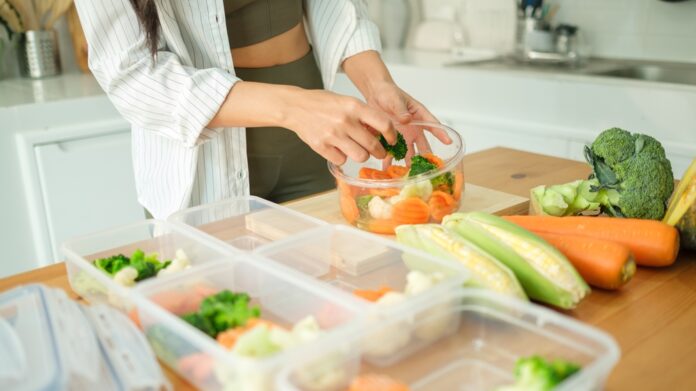In today’s fast-paced world, maintaining a healthy diet can be a challenge. With busy schedules, it’s easy to resort to quick, unhealthy meals. Meal prepping offers a solution by allowing you to plan and prepare nutritious meals in advance, saving time and helping you stick to your dietary goals.
The Benefits of Meal Prepping
Meal prepping isn’t just about saving time. It’s a comprehensive approach to healthier eating and lifestyle management.
- Improves Diet Quality: By planning meals ahead, you can control your nutritional intake and portion sizes, ensuring you consume a balanced diet rich in essential nutrients.
- Saves Time and Reduces Stress: Having ready-to-eat meals means less daily decision-making and cooking, freeing up time for other important activities.
- Cost-Effective: Meal prepping can save you money by reducing food waste and minimizing the temptation to order takeout.
- Supports Weight Management: Regular, portion-controlled meals can aid in maintaining or achieving a healthy weight by preventing overeating.
Getting Started with Meal Prepping
Embarking on a meal prep journey doesn’t have to be daunting. Here’s how to begin:
1. Plan Your Meals
Decide on the meals and snacks you’d like to prepare for the week. Start by creating a simple meal plan that includes a variety of foods to keep your diet interesting and balanced.
2. Make a Shopping List
Before heading to the store, check your pantry and fridge to see what ingredients you already have. Then, compile a comprehensive grocery list to ensure you buy only what you need, helping to minimize food waste.
3. Gather Essential Tools
Invest in quality storage containers that are microwave-safe and freezer-friendly. Basic kitchen tools like sharp knives, cutting boards, and measuring cups will make the prepping process more efficient.
4. Start Small
If you’re new to meal prepping, begin by preparing just a few meals to avoid feeling overwhelmed. Gradually increase the number as you become more comfortable with the process.
Meal Prep Ideas for the Week
Breakfast Options
- Overnight Oats: Mix oats with milk or a dairy-free alternative and add your favorite toppings. Prep individual servings in jars for a quick grab-and-go breakfast.
- Egg Muffins: Whisk eggs with chopped vegetables, pour into a muffin tin, and bake. These protein-packed bites can be stored in the fridge and reheated in minutes.
Lunch Ideas
- Mediterranean Quinoa Salad: Combine cooked quinoa with fresh vegetables, herbs, and a simple dressing. This salad keeps well and flavors deepen over time, making it perfect for meal prep.
- Chicken Teriyaki Stir-Fry: Sauté chicken with a medley of vegetables and a homemade teriyaki sauce. Portion it with rice for hearty, ready-to-eat meals throughout the week.
Dinner Suggestions
- Baked Salmon with Veggies: Season salmon fillets and roast alongside your favorite vegetables. Salmon is rich in omega-3 fatty acids, which are beneficial for heart health.
- One-Pan Meals: Dishes like roasted chicken and vegetables are not only easy to prepare, but also minimize cleanup.
Meal Prepping Tips
- Prep Components Separately: For meals like salads and sandwiches, keep ingredients separate to maintain freshness and prevent sogginess.
- Embrace Freezer-Friendly Recipes: Soups, stews, and casseroles often freeze well and can be reheated easily, providing convenient meal options.
- Incorporate Variety: To avoid meal fatigue, introduce new recipes or rotate ingredients each week.
- Label Your Meals: Mark containers with the contents and the date prepared. This practice helps you keep track of freshness and plan your meals accordingly.
Food Safety Considerations
- Storage Duration: Prepared meals should be consumed within three to four days. If you don’t plan to eat them within this timeframe, freeze them promptly.
- Proper Reheating: When reheating, ensure that food reaches a safe internal temperature to prevent foodborne illnesses.
Staying Motivated
- Set Realistic Goals: Meal prepping doesn’t have to mean cooking every meal for the week. Tailor your approach to fit your lifestyle and preferences.
- Enjoy the Process: Make meal prep enjoyable by listening to music or podcasts while you cook.
- Stay Flexible: Don’t be afraid to adjust your meal plan as needed. The key is to find a system that works for you.
Conclusion
Meal prepping is a powerful tool to help you achieve and maintain a healthy eating lifestyle. By investing a little time each week, you can enjoy delicious, nutritious meals without the daily hassle of cooking. Start small, stay organized, and embrace the variety that meal prepping can bring to your diet. Your future self will thank you!


